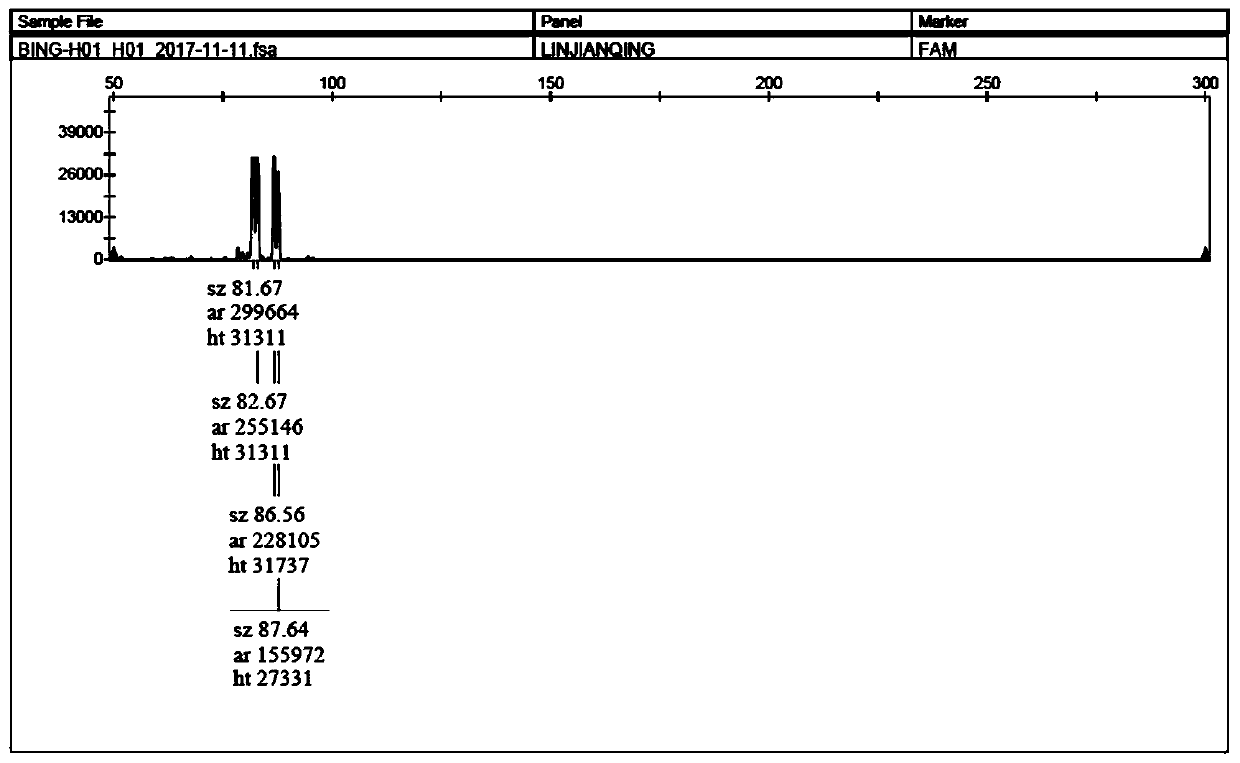Giant Panda Microsatellite Polymorphic Sites, Identification Methods and Primer Sequences
A technology of microsatellite loci and polymorphic loci, applied in biochemical equipment and methods, microbial determination/inspection, DNA/RNA fragments, etc., can solve the problem of low locus polymorphism, time and cost , poor specificity of primer design, etc., to achieve the effect of strong resolution
- Summary
- Abstract
- Description
- Claims
- Application Information
AI Technical Summary
Problems solved by technology
Method used
Image
Examples
Embodiment Construction
[0047] The identification method of the giant panda microsatellite polymorphic site provided by the invention comprises the following steps:
[0048] 1) Use the giant panda reference genome to screen out the microsatellite loci, and after multiple rounds of primer design and screening processes, design PCR amplification primers for the giant panda microsatellite locus sequence;
[0049] The process of using the giant panda reference genome to screen microsatellite sites is specifically:
[0050] To identify the microsatellite (SSR) sequence on the giant panda genome, the motif (motif) of the microsatellite sequence with a repeating unit of 2-6bp needs to meet the following requirements:
[0051] For two-base motifs, the number of repetitions is required to be greater than or equal to 6; for three-base, four-base, five-base and six-base motifs, the number of repetitions of the repeating unit is required to be greater than or equal to 4 times ;
[0052] Thus, the microsatellit...
PUM
 Login to View More
Login to View More Abstract
Description
Claims
Application Information
 Login to View More
Login to View More - R&D
- Intellectual Property
- Life Sciences
- Materials
- Tech Scout
- Unparalleled Data Quality
- Higher Quality Content
- 60% Fewer Hallucinations
Browse by: Latest US Patents, China's latest patents, Technical Efficacy Thesaurus, Application Domain, Technology Topic, Popular Technical Reports.
© 2025 PatSnap. All rights reserved.Legal|Privacy policy|Modern Slavery Act Transparency Statement|Sitemap|About US| Contact US: help@patsnap.com



